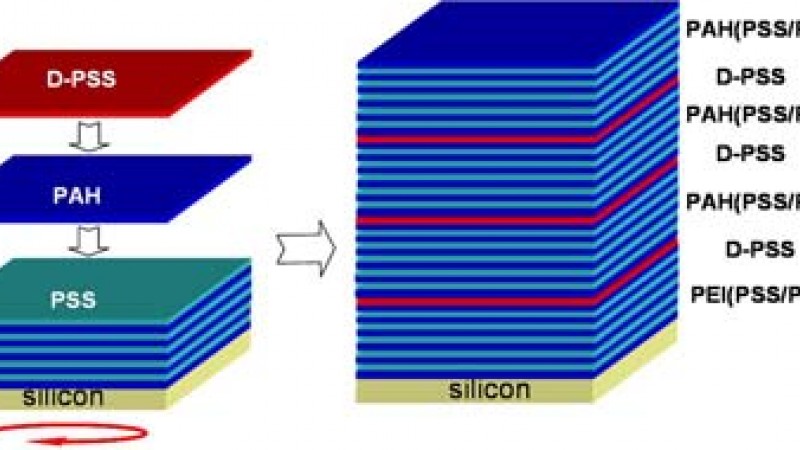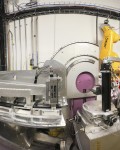A research collaboration with Georgia Tech is using the Liquids Reflectometer at SNS to probe the internal structure of highly tailored, ultrathin materials known as polyelectrolyte films to gain new insight into the mechanism of layer-by-layer (LbL) assembly and the final microstructure of such materials.
LbL grown nanoassemblies offer nanometer-level control of composition, thickness, and tunable chemical functions in thin films. They are produced by repeatedly dipping a substrate into alternating water solutions of oppositely charged species, such as biological molecules, polymers, organic molecules, and nanoparticles.
Scattering techniques such as neutron reflectivity have long been used to investigate the internal structures of conventionally made LbL films at the nanoscale. The researchers are now using neutron scattering to study a new technique called spin-assisted (SA-LbL) assembly and its potential to improve the quality of the deposited films. SA-LbL constructs the ultrathin films more rapidly than previous techniques, with high mechanical robustness and strength. Furthermore, unlike conventional LbL assembly, SA-LbL can be used to layer complex biological materials.
The Liquids Reflectometer specializes in probing the interfaces in complex fluids, polymers, and chemistry. In this research, the neutron studies showed the scientists that by varying the type and concentration of salt during LbL assembly, they can control the level of stratification and the degree of intermixing of the film layers. When deposited from salt-free solutions, such films exhibit a well-defined layer structure with significantly thicker layers than those in conventional LbL films. When phosphate is introduced as a buffer, the layers begin to interdiffuse; adding salt restores the stratification of the layers.
The results yield new insights into the mechanism of SA-LbL assembly and the final microstructure of the films. The researchers say that manipulating the internal structure of the films by varying the concentration of phosphate and sodium chloride is relevant to physiological conditions and therefore may be essential for biotechnological applications such as sustained drug delivery and tissue regeneration. Such films also have potential applications in a new generation of pressure and temperature sensor arrays.
Gaining insight into the mechanism of SA-Lbl assembly and control over the film structure will eventually provide a rational methodology for controlling microstructure and characteristics, which is essential for multiple functionalized nanomaterials applications.
Research at SNS was funded by the U.S. Department of Energy (DOE) Office of Basic Energy Sciences.
Published Work
Eugenia Kharlampieva, Veronika Kozlovskaya, Jennifer Chan, John F. Ankner, and Vladimir V. Tsukruk, "Spin-assisted layer-by-layer assembly: Variation of stratification as studied with neutron reflectivity," Langmuir (2009), pubs.acs.org/ Langmuir, DOI: 10.1021/la9014042.





